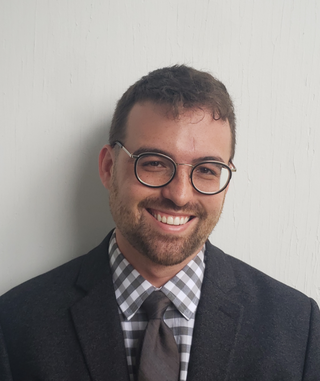Media
The Dangers of Rampant Fentanyl Misinformation
An expert medical toxicologist explains.
Posted May 25, 2021 Reviewed by Devon Frye
Key points
- There exists rampant misinformation in both mainstream and social media about the overdose crisis and fentanyl.
- Fentanyl misinformation can worsen health outcomes.
- Social media users amplified factually untrue mainstream media articles to millions of users.
- The use of critical thinking and fact checking can reduce misinformation spread.
To say that the overdose crisis in North America is devastating would be an understatement. Its ravaging impact can be felt at both the personal and societal levels of analyses. The causes and solutions are complicated and multi-pronged. Unfortunately, there exists rampant misinformation in both mainstream and social media about the overdose crisis that can worsen health outcomes—particularly with respect to the nature and safety of the opioid, fentanyl.

In this vein, I’ve invited Dr. Ryan Marino to offer some of his extensive insights into this topic. Dr. Marino is an emergency medicine physician and medical toxicologist with expertise in addiction and fentanyl myths.
Dr. Stea: Thank you for agreeing to this interview. Can you tell us a bit about the nature of your clinical work with respect to the intersection between addiction, emergency medicine, and toxicology?
Dr. Marino: I work in a number of different settings and have seen the reach of our ongoing overdose crisis in the ER, in hospitalized patients, in outpatients, and in my own life. One of the things that is usually not included in the discussion about overdoses and opioids in general is the effect that misinformation or even just lack of access to good (factual) knowledge on a topic can have.
Yes, it is true that overdoses have gone up secondary to fentanyl overtaking our drug supply, and yes, it is true that most of the overdose deaths to this day are still attributable to fentanyl. While it is naturally terrifying to hear that mere milligrams of a substance can possibly be fatal and to see the devastation of this mass poisoning going on around us, it does not mean that fentanyl is a threat to everybody, like some kind of boogeyman.
In my own work, I now encounter people with horrible injuries turning down fentanyl for their pain because of the negative connotations it has taken on, and have seen overdose victims not be resuscitated appropriately because of the fear that fentanyl or other drugs could be contagious.
Fentanyl is just a drug, and as such, it is not capable of being either good or bad. It is used safely every day for pain, surgery, and sedation, and has been used safely as a medicine for decades. It can be dangerous when it comes as a surprise in a substance that was supposed to be something less potent like heroin, or when it is used in unknown amounts as it often is on the street where drugs are unregulated due to prohibition.
Regardless of how people feel about fentanyl, it is a physical molecule that has been studied for many years and has predictable behaviors, and it does not pose a risk to people who aren’t doing drugs. If you aren’t ingesting drugs, then fentanyl cannot easily get into your system—and more specifically, it does not easily cross the skin barrier on its own nor does it spontaneously aerosolize into the air.
Dr. Stea: You recently co-authored a paper entitled "Fentanyl panic goes viral: The spread of misinformation about overdose risk from casual contact with fentanyl in mainstream and social media." What were the most important findings from that work and how can we use them as an anti-misinformation tool?
Dr. Marino: The incredible research that I have to give credit to my collaborators for doing—and is open access to everyone, by the way!—was notable in showing the profound reach that fentanyl misinformation has in our society, as well as the extent that these myths have permeated our news and social media. We looked at mainstream media articles about fentanyl and categorized them as either misinformation or correct, fact-based narratives.
We found that the vast majority—92 percent—of such articles promoted misinformation even though corrective articles are being written and accurate information was available. Additionally, we confirmed the potential for social media to spread misinformation, as these factually untrue articles were shared ten times more than accurate articles to reach almost 70 million users on Facebook, while accurate articles only reached about 6 percent as many Facebook users.
It is important to note that this panic is not just clicks and shares; it has real-world consequences. This misinformation has led to time-critical resuscitations being delayed, undue stress responses, worse treatment of people who use drugs, and most worryingly, has led to hyper-punitive legal responses that only increase harms to already marginalized and vulnerable people without improving our drug problem.
Dr. Stea: You and I have joked in the past on social media that fentanyl myths are like the cockroaches of misinformation: they just won’t die! Why do you think that is the case?
Dr. Marino: The cockroach analogy is especially appropriate. Not only do these myths refuse to die—but just like when you see one cockroach, it is reasonable to assume that there are many more behind the scenes. The myths about second-hand exposure, in particular, seem to be related to other popular (but false) myths about people who use drugs being inherently "dirty" or "contaminated." There are also persistent myths about them constantly trying to dose other people with drugs—the myth about drugs in Halloween candy is a great example—and being inherently dangerous to other people.
At the end of the day, these myths all seem to come from societal and cultural biases that can be traced back decades or longer. And just like invasive pests, we should all want to rid them from our homes and our lives.
Dr. Stea: In what way can various health professionals and the general public come together to help squash fentanyl myths?
Dr. Marino: It is impossible for every person to be an expert on every topic—I am definitely not—and distrusting all news sources is not a good approach. What everyone is capable of, however, is applying critical thinking to certain topics. For instance, if you could overdose on drugs by touching them, then why would people go to the extremes of injecting them?
Fact-checking was historically considered to be a core tenet of journalism, but if a news source prints a police bulletin about drugs, it is worth asking why we trust law enforcement (or even the criminal justice system and politicians) to inform us on how these chemicals work when they have no requisite background in chemistry, drug science, medicine or even addiction. If the police released a statement attributing an officer getting sick at a scene to plutonium from a dirty bomb, then that would not be accepted or printed without some sort of critical appraisal of the facts to support that claim. The same should be true for drugs and every other topic.
Dr. Stea: Do you have any final words of wisdom for us?
Dr. Marino: People who use drugs are people. They are very often our friends and family, and when they aren’t someone we know they still matter to someone else and they still deserve to be treated like people. Right now we are witnessing so many preventable deaths and so many lives lost that we will feel the repercussions for decades to come, and it really is all preventable and didn’t ever have to be this way.
It may be too late to bring back the dead, but it is never too late to change how we treat the living, and the best way to start breaking down our ingrained cultural biases that lead to stigma is with facts, science, and evidence. Hug somebody who uses fentanyl; I promise it won’t kill you. Tell the people you know that drugs aren’t contagious and the people who use them aren’t contaminated or dirty or out to get anyone. Hold the news accountable to fact check the information they provide to the public, and correct that person on social media who keeps sharing misinformation; I promise that human lives are worth it.




